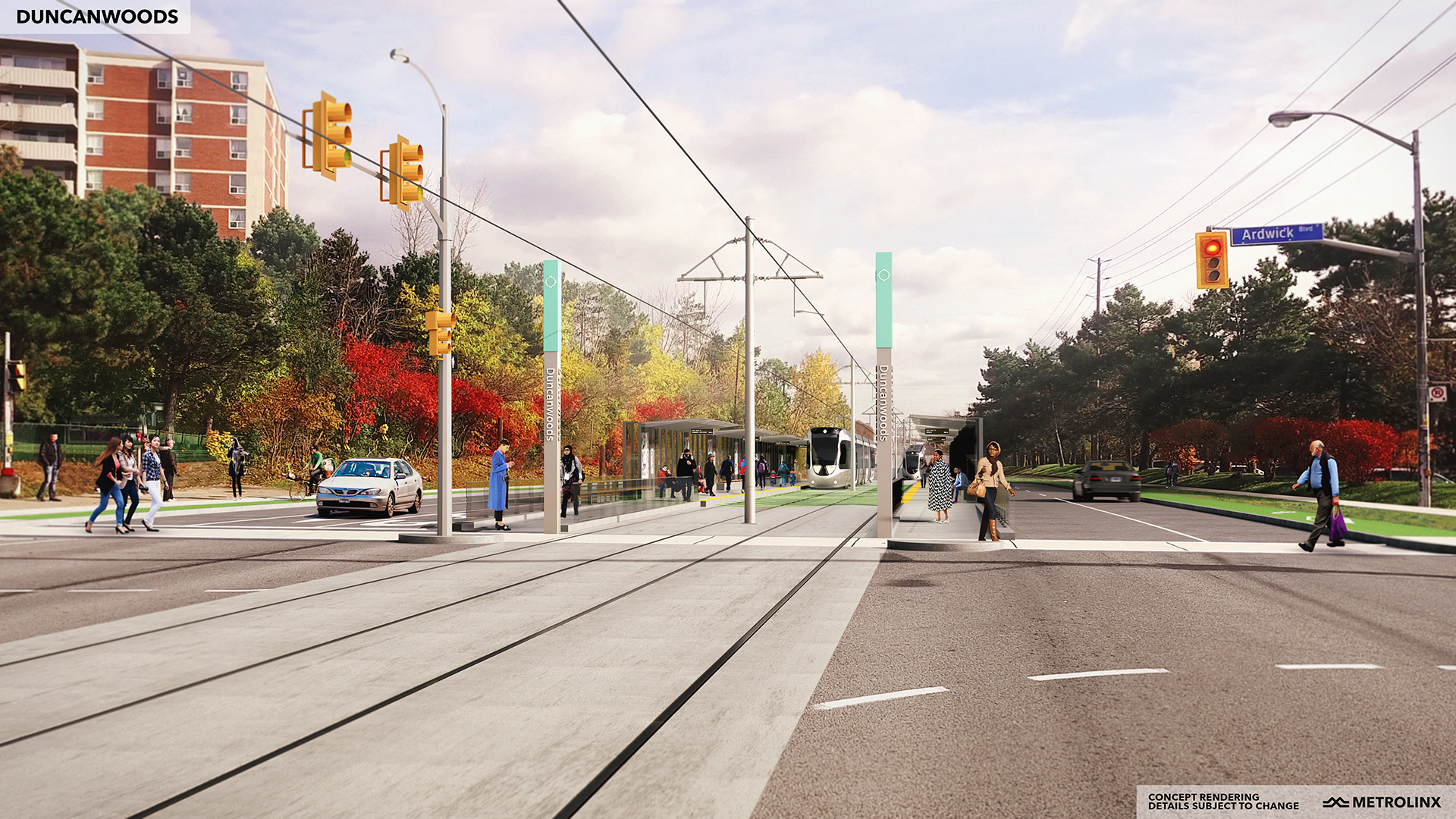Cross Finch in a pinch
Posted 25/06/2019

Ontario’s Alternative Financing and Procurement (AFP) programme is funding a $2.06 billion light rail transit system, $1.2 billion for construction, that sets out to transform the economy of north west Toronto. Infrata is the project lenders’ technical advisor.
The commuters who take the 36 Finch West bus from north west Toronto into the city have dealt with daily frustration for many years with passengers facing delays and overcrowding on the 17km route.
Happily, a better alternative is now being built. The Finch West light rail transit (LRT) project will replace the overstretched bus lane with a fast 11km modern train route that will run from Humber College to Keele Street. It will be operational in 2023.
The LRT will start at Humber College with a below-grade stop thereafter providing 16 at-grade stops before terminating at a below ground station connecting into the Line 1 subway at Finch West. Once complete, it will provide transit to 46,000 passengers per weekday – equivalent to 14.6 million rides a year. To broaden transport options still further, the project will include a delineated cycle lane on both sides of the road.
Public authorities began discussing a new public transit system for the area over a decade ago. But the original project was scrapped by Mayor Rob Ford in 2010. The project was relaunched in April 2015, when Metrolinx, City of Toronto and The Toronto Transit Commission confirmed that the Finch West LRT was moving forward with a budget of $2.06 billion provided via Infrastructure Ontario’s AFP programme.
In September 2015, the sponsors issued a request for proposal (RFP). Infrata were appointed by the Mosaic Transit Group bidding consortium to provide LTA services to support the credit approval process through the bid phase giving the lenders the confidence to invest. In May 2018, the contract for design, build, finance and maintenance (DBFM) was awarded to Mosaic Transit Partners comprising ACS Infrastructure Canada, Aecon and CRH Canada Group.
According to the stakeholders, the Finch West LRT is relatively straightforward from a technical standpoint, although it does have its challenges one of them being the reconstruction of the Highway 400 bridge which the LRT line will pass under.
As all locals will know, Highway 400 is an extremely busy roadway, carrying six lanes of traffic and the constructors had to find a way to re-build the bridge with minimal disruption to motorists.
They decided to use a 'Rapid Bridge Replacement' technology. This will consist of a pre-fabricated bridge deck, which they will build away from the main site. When it is ready, they demolish the old bridge and drive-in the new deck all in a single weekend.
Another complication came when Metrolinx changed the supplier of its trams. In 2010, it signed a contract with Bombardier to provide trams for the project. However, in 2017 it cancelled the deal and awarded the tram supply contract to Alstom.
Ray Powell, Technical Director at Infrata, says: " When the Bombardier contract collapsed, it did have some impact on the bidding process as the trams were being procured by the public authorities and the consortium had no control over the timeline for finding a replacement provider."
Aside from dealing with these unforeseen events, the major concern of the stakeholders has been the challenge of working harmoniously with a wide variety of third parties.
Vicente Gurrea, CEO of Mosaic Transit Partners, explains why. "The Finch West LRT construction project takes place in a highly populated area, so we need to coordinate with utility companies, city authorities, highways agencies and more," he says. "We have to integrate with Toronto Transit Commission's existing system, so it's all about working well with third parties."
This is where Infrata's insight makes a difference. The advisor writes a monthly report that details spending and organises a quarterly site visit to engage with engineers.
"Infrata has been very helpful," adds Gurrea. "They have a lot of experience in projects of this type. They really understand the design considerations and the many permits and licences we need to apply for."
Gurrea says that Infrata's value-add is not just about the quality of information, but also how it is presented. "The reports are excellent. Some advisors supply reports that run to hundreds of pages and are hard to read. Infrata's come right to the point, so we know what to look for, which really helps when we are talking to lenders," he says.
One example of this is the implementation of Infrata's traffic light system for tracking the status of the 2,000 plus permits Mosaic has applied for. This colour-codes the permits according to their progress. "It's hard to keep track when there are thousands of these permits," says Gurrea. "But with this system we can group them by colour and not date, so they are easier to review."
Ray Powell adds: "It's important to have good visualisations for lenders and engineers. We know lenders need to assimilate information quickly, so we like to take a 100-page contractor report, and turn it into a five to 10 page report with lots of graphical illustrations."
Construction work on the project is now well underway with a full tram service expected to be in operation in 2023.